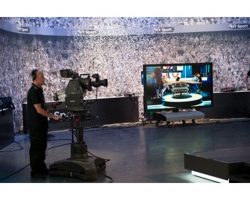The transition to computer-based technologies and file-based workflows is one of the most significant changes the broadcast and production industry has seen and came about more quickly and completely than any of the other recent changes. It is a transition that is dependent on People, Process and Technology.
Of all the books and papers discussing storage mapping, packet transport, and compression algorithms, none puts all the pieces together and explains where these fit into the whole environment.
‘Planning and Designing the IP Broadcast Facility’ is the first to provide a comprehensive understanding of the complete technology architecture, changes to the physical facility, new roles and responsibilities for engineering and operations – and – most importantly the introduction of new media management workflows and business processes.
Production moved from analogue linear to digital (SD/HD-SDI), from standard definition to high definition and then on to IP and file-based. Content delivery went from a single format of distribution to many different platforms. Media is produced for multiple delivery platforms: Over the Air, Over the Top, large screen displays, cable, satellite, web, game consoles, digital signage, tablets, and smartphones.
These new platforms each have different production values and requirements that are specifically designed to provide a richer user experience. Consumers are creating their own programme schedules on their personal video recorders and then watching their shows on demand and binge watching popular programmes. There are new programme distribution providers like NetFlix and Amazon that are offering original programmes only available through their services.
The way content is produced, handled, managed, and monetised has changed. All aspects of broadcast and production have changed. There are new skills and knowledge needed by broadcast engineers, the infrastructure has changed to applications, servers, storage and networks. The broadcast engineer needs new skills to maintain the quality of streams and files, and his/her new best friend is the IT engineer.
The lifecycle of media has evolved into distribution to different digital platforms with metadata, media asset management, rights management and tighter technology integration between business units. There is a closer relationship between the Business and Technology groups.
Automation is more than just playout. In the file based architecture, file movement, media management and handling are managed and controlled by automation processes. There are new transformative technologies like the Station in a Box, Studio in Box and cloud technologies that are changing the entire programme creation and delivery landscape.
There are many technologies and processes that make up the entire media lifecycle from the creative to production, management/archive and distribution in the IP and file-based architecture. In the IP and file-based world information management plays a critical role.
These changes impact all aspects of creation, production, media management, technical operations, business processes, and distribution to end-users. Every aspect of the broadcast facility is impacted and is changing. The core infrastructure of the broadcast facility is now based on the IP network and managing bandwidth is only one critical consideration.
This new media lifecycle has also brought a new vocabulary and lexicon into broadcast and there is tighter integration between all departments and systems. Metadata is used to describe, control and manage the media (asset, essence, content). There are new rules and policies that govern the use and access of metadata; and the integration between departments.
In today’s cost conscious economy, building a facility has to consider the total cost of ownership, which is both the capital and operations costs. This applies to the physical plant as well as the technology, power, environment even technical furniture. System integration means software and hardware and there are new guidelines for cable and fibre management.
‘Planning and Designing the IP Broadcast Facility’ is a beginning-to-end perspective and provides some useful information and guidelines to the broadcast engineer, system designer, and technical management of the changes to the technology architecture and workflows within the IP and file-based architecture that impact the entire lifecycle and value chain of media.
There are a lot of facets to this and the book is organised in a way that will provide a comprehensive understanding of all the aspects that need consideration when designing an IP ecosystem and transitioning into IP. There have been significant milestones in the growth and evolution of broadcast and production technologies and processes. This examines the profound and substantial changes that the transition to IP is creating.
The cohesive, big-picture viewpoint helps overcome some of the unique challenges of upgrading from a tape based SDI facility to an IP and file-based facility. There are case studies to serve as examples and recommendations, helping to weigh the pros and cons of various approaches.







